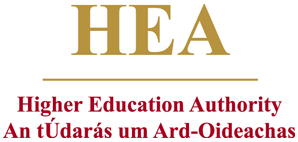An ceann gamhna - Brighid Ní Chaslaigh
Recording: [Download audio file]
[Download AIFF audio file (of processed ‘user’ version)]
[Download AIFF audio file (of archive version)]
Transcript
Seo scéal ar an[1] ceann gamhna.
Bhí bean ann uair amháin agus bhí trí páistí aici féin agus fear. Agus d'imigh sí 'un an margadh agus cheannaigh sí ceann gamhna don meán lae[2] Dé Domhnaigh. Rinn sí réidh trí domplannaí[3] beaga agus dhá domplannaí móra. Agus rinn sí réidh Dé Domhnaigh agus chuir sí an po-... chuir sí an ceann gamhna isteach insa phota. Dúirt sí leise [4] Séamas nuair a bheadh[5] an pota ag goil na domplannaí a chur isteach insa phota. Agus chuir sé na domplannaí isteach insa phota.
Nuair a bhí an pota ag goil, d'amhac[6] sé isteach insa phota. "Ó, dar sliabh!" a deir sé. "Beidh na domplannaí uilig go léir ite aige ceann (an) gamhna agus ceann mo dhaidí an chéad cheann a bheas ite aige. Is fearr domh ghoil 'na tseipéil agus a ársaí do mo mháthair."
Agus d'imigh sé 'na tseipéil agus bhéic sé isteach agus bhí an Aifhreann[7] ag goil ar aghaidh. "Ama[8] dtiocfaidh tú abhaile in am," a deir sé, "beidh na... beidh na domplannaí uilig go léir ite aige ceann (an) gamhna, agus beidh mo cheann (mo) dhaidí an chéad cheann a bheas ite aige."
Sin an scéal ar cheann (an) gamhna.
Translation
This is a story about a calf's head.
There was once a woman and she had three children and a husband. And she went to the fair and she bought a calf's head for the Sunday dinner. She prepared three little dumplings and two large dumplings. And she was preparing on Sunday and she put the po-... she put the calf's head into the pot. She told James when the pot was boiling(?) to put the dumplings into the pot. And he put the dumplings into the pot.
When the pot was boiling, he looked into it. "Oh, goodness!" he said. "The calf's head will eat all the dumplings and he will eat my father's one first. I'd better go to the chapel and tell my mother."
And he went to the chapel and he shouted in and there was a Mass on. "If you don't come home in time," he said, "all the... the calf's head will have eaten all the dumplings and he will eat my father's one first."
That's the story about the calf's head.
Footnotes
Leg. aire? (Back)I.e. 'dinner'. Cf. Seosamh Laoide, Sgéalaidhe Óirghiall (Dublin, 1905), 141. (Back)
= domplagáin. (Back)
= le(is). Prepositions often have an extra syllable in Omeath. See Heinrich Wagner, Linguistic atlas and survey of Irish dialects (4 vols, Dublin, 1958-69), vol. 4, 295. In addition, the third singular masculine form is often used in place of the simple preposition. See Art Hughes, 'Gaeilge Uladh', in Kim McCone et al., Stair na Gaeilge (Maigh Nuad, 1994), 611-60: 657. (Back)
Note v for dh here. (Back)
= d’amharc. Cf. Heinrich Wagner, Gaeilge Theilinn (Dublin, 1959; repr. 1979), § 410. (Back)
= Aifreann. Cf. Séamus Ó Searcaigh, Foghraidheacht Ghaedhilge an Tuaiscirt (Belfast, 1925), § 333. (Back)
= ach mura. The form amar is found also in Armagh. See Patrick S. Dinneen, Foclóir Gaedhilge agus Béarla (Dublin, 1927; repr. 1996), 1322 (appendix). (Back)
Commentary
This humorous tale of the process of cooking an animal's head being misunderstood by a young boy appears to be based on an international folktale, ATU 1320 Fish-eating ikon. International versions concern a fool who carries a bag with an icon and some fish. One of the fish falls out, and he thinks the icon has eaten it. It is found in parts of southeastern Europe and Ireland. See Hans Jorg Uther, The types of international folktales: a classification and bibliography (3 vols, Helsinki, 2004). The tale is relatively rare in Ireland, with less than twenty instances having been recorded in Seán Ó Súilleabháin and Rieder Th. Christiansen's The types of the Irish folktale (Helsinki, 1968), 158. It can also be seen to contain an international folk motif, J1813.8 Sheep’s head has eaten dumplings. See Stith Thompson, Motif-index of folk literature (rev. and enlarged ed., 6 vols, Bloomington, Ind., 1955-8). This is primarily found in an English-speaking context, in England, Scotland or parts of the New World. See E.G. Bales, 'Folklore from west Norfolk', Folklore 50:1 (1939), 66-75: 73, and Katherine Mary Briggs, A dictionary of British folktales in the English language (London, 1991), 264-5. See also Florence O. Meade, 'Folk tales from the Virgin Islands', The Journal of American Folklore 45:177 (1932), 363-71: 365.
This story is transcribed also in Heinrich Wagner and Colm Ó Baoill, Linguistic atlas and survey of Irish dialects (4 vols, Dublin, 1958-69), vol. 4, 300.
Title in English: The calf's head
Digital version published by: Doegen Records Web Project, Royal Irish Academy
Description of the Recording:
Speaker:
Brighid
Ní Chaslaigh from Co.
Louth
Person who made the recording:
Karl Tempel
Organizer and administrator of the recording scheme: The Royal Irish Academy
In collaboration with: Lautabteilung, Preußische Staatsbibliothek (now Lautarchiv,
Humboldt-Universität zu Berlin)
Recorded on 25-09-1931 at 16:45:00 in Queen's
University, Belfast. Recorded on 25-09-1931 at 16:45:00 in Queen's
University, Belfast.
Archive recording (ID LA_1222d1, from a shellac disk stored at the
Royal Irish Academy) is 01:15 minutes
long. Archive recording (ID LA_1222d1, from a shellac disk stored at the
Royal Irish Academy) is 01:15 minutes
long.
Second archive recording (ID LA_1222b1, from a shellac disc stored in
Belfast) is 01:16 minutes long. Second archive recording (ID LA_1222b1, from a shellac disc stored in
Belfast) is 01:16 minutes long.
User recording (ID LA_1222d1, from a shellac disk stored at the Royal
Irish Academy) is 01:15 minutes long. User recording (ID LA_1222d1, from a shellac disk stored at the Royal
Irish Academy) is 01:15 minutes long.





